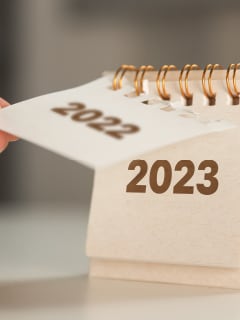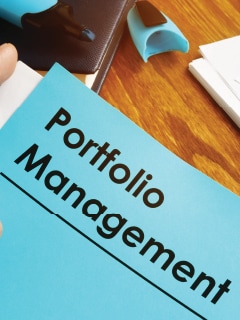CKYC Registry
-
Customer Service Contact us Service request Locate a branch
Find all the help you need
Scan the QR, get our app, and find help on your fingertips

Help CenterSupport topics, Contact us, FAQs and more
-
Login
Are you ready for an upgrade?
Login to the new experience with best features and services
-
Login
Are you ready for an upgrade?
Login to the new experience with best features and services
- Accounts
-
Deposits
IDFC FIRST Bank Deposits
View all Deposits -
Loans
IDFC FIRST Bank Loans
View all Loans - Wealth & Insure
-
Payments
IDFC FIRST Bank Payments
View all Payments -
Cards
IDFC FIRST Bank Cards
View all Cards - Blogs
- Corporate Account
-
Cash Management Services
IDFC FIRST Bank Cash Management Services
View all Cash Management Services - Supply Chain Finance
-
Corporate Lending
IDFC FIRST Bank Lending
View all -
Treasury
IDFC FIRST Bank Treasury
See more details - NBFC Financing
Support topics, Contact us, FAQs and more
- IDFC FIRST Bank Accounts
-
Savings Account
-
Corporate Salary
Account -
Senior Citizens
Savings Account -
First Power
Account -
Current Account
-
NRI Savings
Account -
TASC Institutional
Account -
Savings Account
Interest Calculator
- IDFC FIRST Bank Deposits
-
Fixed Deposit
-
Recurring Deposit
-
NRI Fixed Deposit
-
Safe Deposit Locker
-
FD Calculator
-
RD Calculator
- IDFC FIRST Bank Loans
-
Personal Loan
-
Consumer Durable
Loan -
Home Loan
-
Business Loan
-
Professional Loan
-
Education Loan
-
New Car Loan
-
Pre-owned Car Loan
-
Two Wheeler Loan
-
Pre-owned Two
Wheeler Loan -
Commercial Vehicle
Loan -
Gold Loan
-
Loan Against Property
-
Loan Against Securities
-
Easy Buy EMI card
-
Personal Loan
EMI Calculator -
Education Loan
EMI Calculator -
Home Loan
EMI Calculator -
EMI Calculator
-
Personal Loan Eligibility Calculator
- IDFC FIRST Bank Wealth & Insure
-
FIRST Select
-
FIRST Wealth
-
FIRST Private
-
Mutual Funds
-
Sovereign Gold Bond
-
Demat Account
-
Term Insurance
-
Life Insurance
-
Health Insurance
-
General Insurance
-
Bonds
-
Loan Against
Securities -
Portfolio Management
Service
- IDFC FIRST Bank Payments
-
FASTag
-
Credit Card
Bill Payments -
UPI
-
Funds Transfer
-
Forex Services
-
Pay Loan EMI
- IDFC FIRST Bank Cards
-
Ashva :
Metal Credit Card -
Mayura :
Metal Credit Card -
FIRST Millennia
Credit Card -
FIRST Classic
Credit Card -
FIRST Select
Credit Card -
FIRST Wealth
Credit Card -
FIRST WOW!
Credit Card -
Deals
-
Debit Cards
-
Co-branded Cards
-
Credit Card
EMI Calculator -
FIRST Corporate
Credit Card -
FIRST Purchase
Credit Card -
FIRST Business
Credit Card
- Premium Metal Credit Cards
-
AshvaLifestyle1% Forex₹2,999
-
MayuraLifestyleZero Forex₹5,999
-
FIRST PrivateInvite Only
- Best for travellers
-
MayuraZero ForexMetal₹5,999
-
Ashva1% ForexMetal₹2,999
-
FIRST WOW!Zero ForexTravelLifetime Free
-
FIRST SWYPTravel OffersEMI₹499
-
FIRST Select1.99% ForexLifestyleLifetime Free
-
FIRST Wealth1.5% ForexLifestyleLifetime Free
-
Club VistaraTravelLifestyle₹4,999
-
IndiGo IDFC FIRST Dual Credit CardTravelLifestyle₹4,999
- Max benefits, Free for life
-
FIRST Classic10X RewardsShoppingNever Expiring Rewards
-
FIRST Millennia10X RewardsShoppingNever Expiring Rewards
-
FIRST Select10X RewardsLifestyle1.99% Forex
-
FIRST Wealth10X RewardsLifestyle1.5% Forex
-
FIRST WOW!RewardsTravelZero Forex
-
LIC ClassicRewardsInsuranceShopping
-
LIC SelectRewardsInsuranceShopping
- Reward Multipliers
-
AshvaLifestyleMetal₹2,999
-
MayuraLifestyleZero Forex₹5,999
-
FIRST ClassicNever Expiring RewardsShoppingLifetime Free
-
FIRST MillenniaNever Expiring RewardsShoppingLifetime Free
-
FIRST SelectNever Expiring RewardsLifestyleLifetime Free
-
FIRST WealthNever Expiring RewardsLifestyleLifetime Free
- Rewards & Credit on UPI
-
FIRST Power+FuelUPI₹499
-
FIRST PowerFuelUPI₹199
-
FIRST EA₹NVirtual1% Cashback₹499
-
FIRST DigitalVirtualUPI₹199
-
IndiGo IDFC FIRST Dual Credit CardUPITravelDual cards
- Fuel and Savings
-
FIRST PowerRewardsUPI₹199
-
FIRST Power+RewardsUPI₹499
-
LIC ClassicRewardsInsuranceShopping
-
LIC SelectRewardsInsuranceShopping
- Express and Flaunt
-
AshvaMetal1% Forex₹2,999
-
MayuraMetalZero Forex₹5,999
-
FIRST SWYPEMIOfferMAX₹499
-
FIRST MillenniaRewardsShoppingLifetime Free
- FD Backed rewarding Credit Cards for all
-
FIRST EA₹NVirtualCashback₹499
-
FIRST WOW!Zero ForexTravelLifetime Free
-
CreditPro Balance TransferTransfer & SaveReduce InterestPay Smartly
- IDFC FIRST Bank NRI Forex Solutions
-
Send money to India-Wire transfer
-
Send money to India-Digitally
-
Send money abroad
-
Max Returns FD (INR)
- IDFC FIRST Bank MSME Accounts
-
Platinum Current
Account -
Gold
Current Account -
Silver Plus
Current Account -
Merchant Multiplier
Account -
Agri Multiplier
Account -
TASC Institutional
Account -
Dynamic Current
Account -
World business
Account -
First Startup
Current Account
- IDFC FIRST Bank Business Loans
-
Business Loan
-
Professional Loan
-
Loan Against Property
-
Business Loan for Women
-
Working Capital Loan
-
Construction Equipment Loan
-
Machinery Loan
-
Healthcare Equipment Loan
- IDFC FIRST Bank Business Solutions
-
Payment Solutions
-
Tax Payments
-
Doorstep Banking
-
Point of Sale (POS)
-
Escrow Accounts
-
NACH
-
Payment Gateway
-
UPI
-
Virtual Accounts
-
As per amendment in the Income Tax Rules, PAN or Aadhaar are to be mandatorily quoted for cash deposit or withdrawal aggregating to Rupees twenty lakhs or more in a FY. Please update your PAN or Aadhaar. Kindly reach out to the Bank’s contact center on 1800 10 888 or visit the nearest IDFC FIRST Bank branch for further queries.
-
-
Most Searched
Sorry!
We couldn’t find ‘’ in our website
Here is what you can do :
- Try checking the spelling and search
- Search from below suggestions instead
- Widen your search & try a more generic keyword
Suggested
Get a Credit Card
Enjoy Zero Charges on All Commonly Used Savings Account Services
Open Account Now
What is risk assessment and how to create a risk management plan
Summary: The personal financial planning and analysis process starts with risk assessment, which involves identifying risks. The risks are mitigated and reviewed regularly till the financial goals are achieved.
Most investment products carry an element of risk, the difference is the level or degree of risk every product has. An individual's decision whether or not to invest in a particular financial product and how much to invest depends on the risk involved. Usually, the return expectation is also based on risk assessment. The higher the risk, the higher the return expectation.
In this article, you will learn about risk assessment, the various risks that investment products entail, and ways to mitigate them.
What is risk assessment?
In personal financial planning and analysis, the process of risk assessment involves identifying the risks in various investments. The risks are then matched with an individual's risk appetite, and an investment portfolio is built accordingly.
The performance of the portfolio needs to be monitored regularly after it has been made. An individual's portfolio review is an ongoing process until his or her financial goals have been achieved. It involves analysing whether the risks and returns are playing out as expected. If there are significant deviations, corrective action must be taken.
Having understood risk assessment, the next step is to determine what risks different financial products carry and how to match them with your risk profile.
READ MORE
Risk assessment of financial products
Various financial products carry various risks. Some of these include:
· Domestic equities:
Equities come with risks such as lower-than-expected return, capital loss, volatility, illiquidity
· International equities:
They also carry risks similar to domestic equities. However, they have an additional risk of currency movements, war, geo-political issues etc.
· Fixed income products:
These carry credit risk, interest rate risk, reinvestment risk, etc.
The next step in the risk assessment process is to match the risks involved in financial products with the investor’s risk appetite.
Investment planning:Individual risk assessment
Risk is often associated with outcomes that are opposite or negative to what is expected in individual financial planning and analysis. In most cases, individuals invest in order to make a profit. Therefore, the term risk is usually associated with a loss or a lower-than-expected profit, or the opposite outcome.
An investor’s risk profile can be classified as follows:
· Aggressive:
An individual with an aggressive risk profile can take high risks. An individual’s risk assessment indicates an appetite for suffering losses or receiving lower than expected returns. Individuals with aggressive risk profiles can invest in equities. Usually, the higher the risk, the higher the return expectations. In the past, equities have created wealth for investors through high returns over long periods of time.
· Conservative:
Those with conservative risk profiles do not have the appetite to take investment risks because they cannot bear losses. Fixed-income products are much less risky than equities, so they are able to invest in them.
The government issues some fixed-income products, including government bonds, Employees' Provident Funds (EPFs), Public Provident Funds (PPFs), National Savings Certificates (NSCs), etc. With a sovereign guarantee, they offer the highest level of safety. However, conservative investors have to be content with low to moderate returns.
· Moderate:
A moderate risk profile indicates a certain level of risk is acceptable to the individual. The risk involved with these products is higher than that of fixed income but lower than that of equity. The expected returns from these products are moderate. They can invest in a combination of fixed income and equity products or hybrid products that offer this combination.
Also read: The importance of managing personal finance in empowering women in India
Factors that impact the risk-taking ability
An individual's risk profile may be high at the beginning of their investment journey based on a preliminary risk assessment. Typically, their risk-taking ability deteriorates with each passing year as they age. The risk profile may also change as certain events occur, such as:
· Financial liabilities:
When an individual takes on a big loan such as a home loan, it may reduce risk-taking ability due to the EMI obligations.
· Responsibilities:
When an individual gets married and has children, it may reduce risk-taking ability due to increased family responsibilities.
· Time left to achieve the financial goal:
As an individual nears a financial goal, they will prefer to shift the money from an asset class with high risk to one with low risk.
Ways of risk management
Now that you know how to do a risk assessment of financial products and match them with your risk profile, it’s time to start planning your investments. However, that is just one way of managing risks. Other ways of risk management include the following:
1) Buying life insurance
While you will do everything you can to achieve your financial goals during your lifetime, your family may suffer financially if you die untimely and tragically. In your absence, your financial goals, such as your child's higher education, your spouse's retirement, may end in jeopardy. Your family will be protected financially from financial consequences resulting from your untimely death if you buy life insurance. If something were to happen to you, your life insurance policy would provide financial security for your family.
2) Contingency planning with an emergency fund
A good idea is to maintain an emergency fund that covers 3-6 months of your regular expenses. This way, you can fall back on the fund if you are laid off from your job, your salary is delayed, etc. You will not have to withdraw money from your long-term investments in the event of an emergency.
It is important to consider lock-in periods of financial products as part of risk assessment. For example, ELSS have a three-year lock-in period, while tax-saving fixed deposits have a five-year lock-in period. In the event of any contingency, you would not be able to withdraw money from an equity and debt combination of these two investment products. Therefore, an emergency fund with a specified lock-in period is essential to mitigate liquidity risks resulting from these and other investments.
You can open an IDFC FIRST Bank Savings Account to build and maintain your emergency fund. Such an account earns you an interest of up to 7.00% p.a., where the interest is credited monthly. You can open the account online within minutes.
3) Building a diversified portfolio with appropriate asset allocation
It is a good risk management practice to follow appropriate asset allocation and invest in a diversified portfolio rather than relying on a single asset class. Each of these asset classes plays a specific role in the investment portfolio, so be sure to include domestic equities, international equities, gold, fixed income, etc.
Asset allocation provides much-needed diversification. Asset classes take turns to outperform each other. Predicting which asset class will do well next year or later is difficult. In order to achieve optimum risk-adjusted returns, asset diversification is essential, regardless of asset class performance.
Adding equities, gold, and fixed income as assets to asset allocation also provides a hedge. For example:
· Gold provides you with a hedge against inflation
· Global equities provide you a hedge against domestic currency depreciation
IDFC FIRST Bank provides personalised investment solutions and helps you build a diversified investment portfolio with various types of mutual funds depending on your risk profile. You can choose from domestic equity funds, international equity funds, debt funds, gold funds, etc.
Regular review of risks
Once you have done the risk assessment of various financial products, matched it with your risk profile, and built a diversified investment portfolio, it continues. Our earlier section discussed how an individual's risk profile can change when specific events occur. You might find it helpful if you did a risk assessment once every six months or once a year. You can add new products, modify existing ones, or remove old ones as necessary during the review. You should continue this regular review process until you reach your financial goals.
Disclaimer
The contents of this article/infographic/picture/video are meant solely for information purposes. The contents are generic in nature and for informational purposes only. It is not a substitute for specific advice in your own circumstances. The information is subject to updation, completion, revision, verification and amendment and the same may change materially. The information is not intended for distribution or use by any person in any jurisdiction where such distribution or use would be contrary to law or regulation or would subject IDFC FIRST Bank or its affiliates to any licensing or registration requirements. IDFC FIRST Bank shall not be responsible for any direct/indirect loss or liability incurred by the reader for taking any financial decisions based on the contents and information mentioned. Please consult your financial advisor before making any financial decision.
The features, benefits and offers mentioned in the article are applicable as on the day of publication of this blog and is subject to change without notice. The contents herein are also subject to other product specific terms and conditions and any third party terms and conditions, as applicable. Please refer our website www.idfcfirstbank.com for latest updates.























